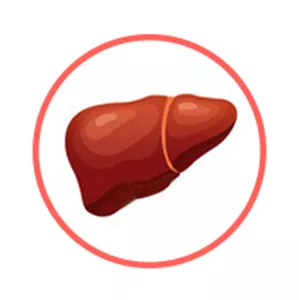Perimenstrual fevers according to Chinese Medicine
The information provided here is not a replacement for a doctor. You shouldn't use it for the purpose of self-diagnosing or self-medicating but rather so you can have a more informed discussion with a professional TCM practitioner.
In Chinese Medicine, perimenstrual fevers is sometimes associated with Lung Qi Deficiency and Liver Qi Stagnation, a so-called "patterns of disharmony". Chinese Medicine sees the body as a system, not a sum of isolated parts. A "pattern" is when the system's harmony is disrupted. It is not equivalent to the Western concept of "disease" because both concepts arise from totally different ways of seeing the human body.
To understand whether someone's perimenstrual fevers might be caused by the pattern Lung Qi Deficiency and Liver Qi Stagnation, one needs to look for signs and symptoms associated with the pattern beyond what one might typically experience from perimenstrual fevers alone. Indeed if perimenstrual fevers is caused by Lung Qi Deficiency and Liver Qi Stagnation, patients also experience symptoms such as coughing, hypochondrium fullness, dizziness and headaches. Similarly, patients with Lung Qi Deficiency and Liver Qi Stagnation typically exhibit empty (Xu) or tight (Jin) pulses as well as a normal (light red), pale tongue with thin white coating.
We've listed below a more detailed description of Lung Qi Deficiency and Liver Qi Stagnation so that you can have a better understanding of where perimenstrual fevers might find its root according to Chinese Medicine.
Once identified, patterns are often treated using herbal formulas. Drinking herbal infusions is the most common remedy in Chinese Medicine, together with acupuncture. Here we detail below two formulas that can help treat Lung Qi Deficiency and Liver Qi Stagnation.
Lung Qi Deficiency and Liver Qi Stagnation, a "pattern of disharmony" associated with perimenstrual fevers

The Liver is a so-called "Zang" Organ. Learn more about the Liver in Chinese Medicine
Lung Qi Deficiency and Liver Qi Stagnation
Pulse type(s): Empty (Xu), Tight (Jin)
Tongue coating: Thin white coating
Tongue color: Normal (light red), Pale
Recommended herbal formula: Xiao Chai Hu Tang
Symptoms: Coughing Dizziness Headaches Depression Moving pain Listlessness Hypochondrium fullness
Perimenstrual fevers might be due to Lung Qi Deficiency and Liver Qi Stagnation if the condition is paired with typical pattern symptoms such as coughing, hypochondrium fullness, dizziness and headaches. Similarly, patients with Lung Qi Deficiency and Liver Qi Stagnation typically exhibit empty (Xu) or tight (Jin) pulses as well as a normal (light red), pale tongue with thin white coating.
Read more about Lung Qi Deficiency and Liver Qi Stagnation here
The two herbal formulas that might help with perimenstrual fevers



The top herbs in Xiao Chai Hu Tang are Bupleurum Roots (Chai Hu), Baikal Skullcap Roots (Huang Qin) and Crow-Dipper Rhizomes (Ban Xia)
Xiao Chai Hu Tang
Source date: 220 AD
Number of ingredients: 7 herbs
Key actions: Treats the Lesser Yang Channels (Gallbladder and Triple Warmer). Regulates the Liver and Spleen functions. Addresses combined Yin-Yang symptoms of External and Internal, Excess and Deficiency, and Hot and Cold.
Why might Xiao Chai Hu Tang help with perimenstrual fevers?
Because it is a formula often recommended to help treat Lung Qi Deficiency and Liver Qi Stagnation, a pattern sometimes associated with perimenstrual fevers. If it looks like you might suffer from Lung Qi Deficiency and Liver Qi Stagnation, this formula might help (although please seek confirmation with a professional practitioner beforehand).



The top herbs in Dang Gui Bu Xue Tang are Milkvetch Roots (Huang Qi) and Dong Quai (Dang Gui)
Dang Gui Bu Xue Tang
Why might Dang Gui Bu Xue Tang help with perimenstrual fevers?
Because it is a formula often recommended to help treat , a pattern sometimes associated with perimenstrual fevers. If it looks like you might suffer from , this formula might help (although please seek confirmation with a professional practitioner beforehand).
Symptoms related to perimenstrual fevers
Coughing Hypochondrium fullness Dizziness Headaches Depression Listlessness Moving pain


